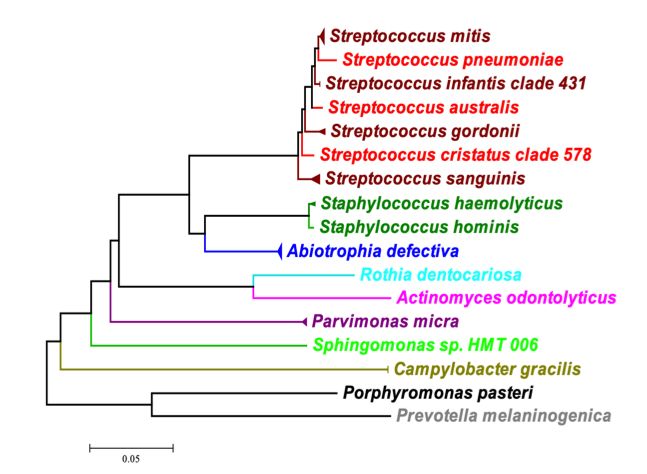IADR Abstract Archives
Endodontic Disease and Bacteremia Mediated Systemic-interactions Pose Cardiovascular Disease Risk
Objectives: Endodontic microbiome is a complex biofilm community and can be source for bacteraemia during disease and endodontic treatment, leading metastatic inflammation which can cause cardiovascular disease (CVD) risk. This study is aimed to characterize the microbiome in endodontic infections and identify bacteremia and inflammatory biomarkers profile before and after endodontic treatment in order to elucidate the links between Endodontics disease and treatment with the systemic health.
Methods: The microbiome of refractory endodontic lesions from patients grouped in the CVD after screening using National Cholesterol Education Program-Adult Treatment Panel III (NCEP-ATP III) criteria, were investigated by targeted partial 16S rRNA gene sequence analysis using the MiSeq Next generation sequencing (NGS) platform. Microbiome analysis was carried out using DC-MEGABLAST and QIIME software package (version 1.9.1, http://qiime.org/). Bacteremia in pre- and post-endodontic treatment blood samples was investigated using culture-based 16SrRNA gene sequence analysis and also targeted NGS. A neighbor-joining tree was constructed using MEGA (version 6) program (http://www.megasoftware.net/). The inflammatory biomarkers profile comparison before and after endodontic treatment was carried out using multiplex microbead assays. Statistical analysis was done using SPSS version 25.0.
Results: Actinomyces, Arthrobacter, Enterococcus, Prevotella, Pseudomonas, Sphingomonas, Streptococcus and Propionibacteriaceae were the most prevalent in refractory Endodontics infections. Nine out of 30 post-endodontic treatment blood cultures were positive for bacteraemia with 17 bacterial taxa of oral origin identified including viridians group streptococci and coagulase-negative staphylococci (Figure-1). NGS results revealed bacteraemia in all pre- and post- treatment blood samples with elevation in the bacteremia after the treatment. The most prevalent taxa belonged to genus Propionibacteriaceae, Staphylococcus, Sphingomonas, Arthrobacter and Streptococcus. The biomarkers profile comparison using multiplex microbead assays also showed significant elevation in the serum levels of biomarkers after the endodontic treatment.
Conclusions: The study results provide evidence of possible links of endodontic disease and treatment with the CVD risk.
Methods: The microbiome of refractory endodontic lesions from patients grouped in the CVD after screening using National Cholesterol Education Program-Adult Treatment Panel III (NCEP-ATP III) criteria, were investigated by targeted partial 16S rRNA gene sequence analysis using the MiSeq Next generation sequencing (NGS) platform. Microbiome analysis was carried out using DC-MEGABLAST and QIIME software package (version 1.9.1, http://qiime.org/). Bacteremia in pre- and post-endodontic treatment blood samples was investigated using culture-based 16SrRNA gene sequence analysis and also targeted NGS. A neighbor-joining tree was constructed using MEGA (version 6) program (http://www.megasoftware.net/). The inflammatory biomarkers profile comparison before and after endodontic treatment was carried out using multiplex microbead assays. Statistical analysis was done using SPSS version 25.0.
Results: Actinomyces, Arthrobacter, Enterococcus, Prevotella, Pseudomonas, Sphingomonas, Streptococcus and Propionibacteriaceae were the most prevalent in refractory Endodontics infections. Nine out of 30 post-endodontic treatment blood cultures were positive for bacteraemia with 17 bacterial taxa of oral origin identified including viridians group streptococci and coagulase-negative staphylococci (Figure-1). NGS results revealed bacteraemia in all pre- and post- treatment blood samples with elevation in the bacteremia after the treatment. The most prevalent taxa belonged to genus Propionibacteriaceae, Staphylococcus, Sphingomonas, Arthrobacter and Streptococcus. The biomarkers profile comparison using multiplex microbead assays also showed significant elevation in the serum levels of biomarkers after the endodontic treatment.
Conclusions: The study results provide evidence of possible links of endodontic disease and treatment with the CVD risk.

